
Please note: As an Amazon Associate I earn from qualifying purchases. I also work with other affiliate partners and may be compensated from the links below. Details here.
Today we are going to take a closer look at the 7 best graphics cards for 1080p 240hz gaming in 2023.
If you’ve been on the hunt for a 1080p powerhouse GPU, then you have probably noticed the vast selection of cards to choose from. It can get confusing with all the technical mumbo jumbo, so we’re here to help.
In this article, we’ll be talking about the performance you can expect in some of the most popular games, as well as the power requirements, dimensions, and other aspects of each graphics card. We’ll also give you a comprehensive analysis and explain the pros and cons of each.
Hopefully, by the time we’re through, you’ll be informed and confident in your decision and one step closer to picking the perfect card for your 240hz monitor.
GPU Benchmarks
Let us begin by showing a graph displaying the performance benchmarks we received.

*IMPORTANT REMINDER: These results were calculated using an i9-12900K processor and DDR5 RAM. While GPU benchmarking primarily tests the GPU’s capabilities, your CPU and RAM will play a factor in your personal results and may not be identical to our own.
Benchmarking is the best way to test a graphics card’s capabilities and, as a result, it’s the most accurate way of comparing them against each other. We use 3DMark to test GPUs performance because it is one of the most reliable and trustworthy benchmarking software available.
Next are a few graphs showing the average frames per second we received in some of the top titles. We have selected these games because we believe they represent a good mix between beautiful scenery and fast-paced action.
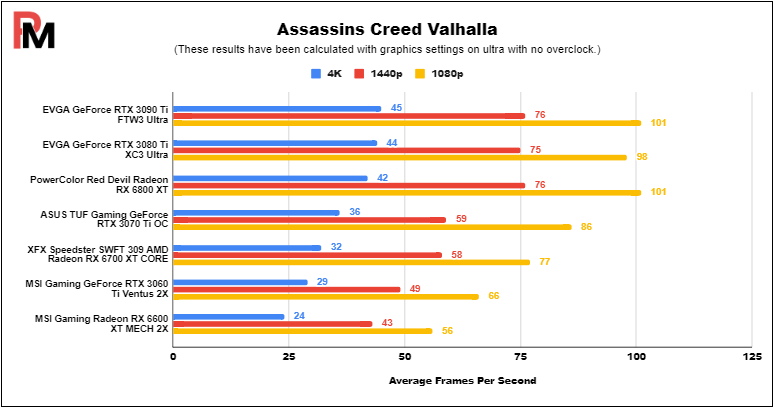
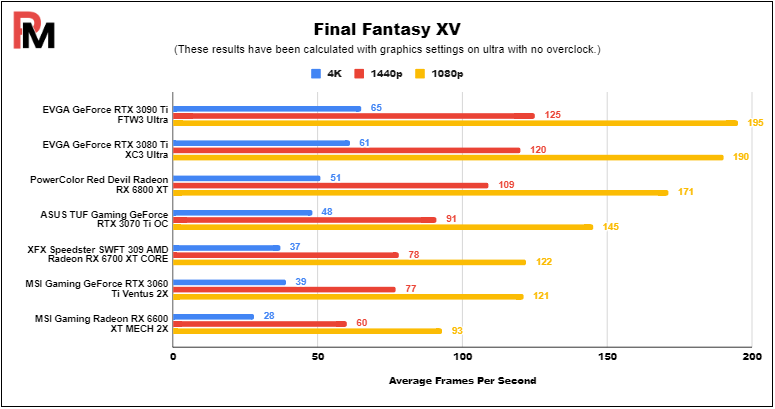
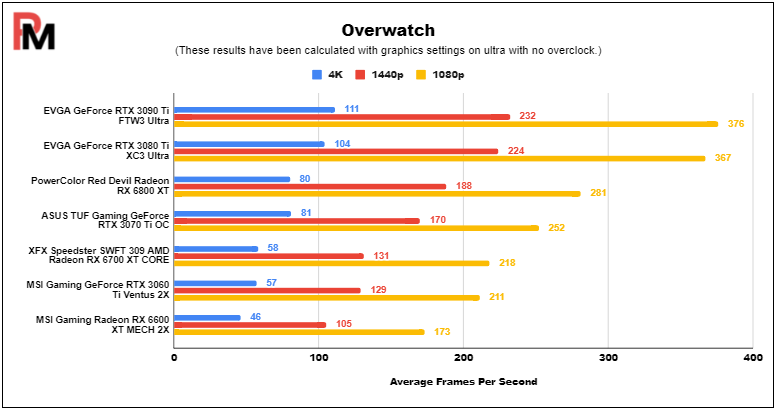
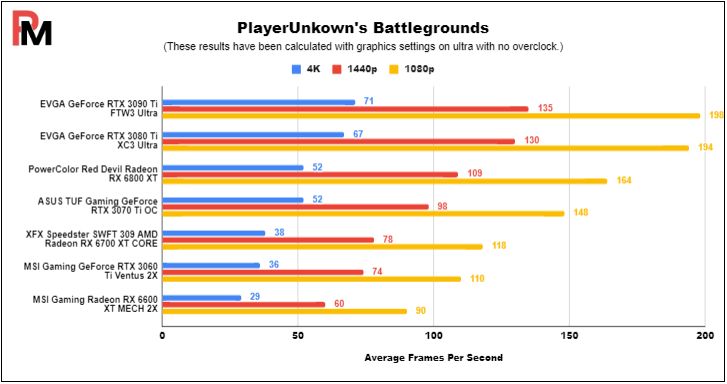
*IMPORTANT REMINDER: These results were achieved while running each game on ULTRA SETTINGS. You can improve your frames significantly by adjusting the in-game settings.
Looking at the data, it’s pretty obvious to see where each card belongs in the line-up. But that doesn’t particularly matter, does it? What matters is which one is best for you. So, let’s get into the reviews and help you decide which one of these cards belongs in your rig.
Best Graphics Cards for 1080p 240hz Gaming in 2023 Round-Up
The table below will give you a quick look at our selections for the seven best gaming graphics cards for 1080p 240hz gaming currently available on the market. To read a full review, simply click on ‘review>>’ in the respective row.
Product | Image | Rating | |
1. EVGA GeForce RTX 3090 Ti FTW3 Ultra ''The best gpu for 1080p 240hz gaming overall'' | 9.9 | ||
2. EVGA GeForce RTX 3080 Ti XC3 Ultra ''Best overall runner-up'' | 9.8 | ||
3. PowerColor Red Devil AMD Radeon RX 6800 XT ''Best bang for your buck'' | 9.7 | ||
4. ASUS TUF Gaming NVIDIA GeForce RTX 3070 Ti OC ''Best for older, less taxing games'' | 9.5 | ||
5. XFX Speedster SWFT 309 AMD Radeon RX 6700 XT CORE ''Best budget gpu for 1080p 240hz gaming'' | 9.4 | ||
6. MSI Gaming Nvidia RTX 3060 Ti Ventus 2X ''Absolute minimum we recommend for 1080p 240hz gaming'' | 9.2 | ||
7. MSI Gaming AMD Radeon RX 6600 XT MECH 2X ''Honorable mention'' | 9.0 |
1. EVGA GeForce RTX 3090 Ti FTW3 Ultra
CUDA Cores: 10752 | Base Clock: 1395 MHz | Boost Clock: 1920 MHz | Memory: 24 GB GDDR6X | Memory Clock Speed: 21000 MHz | Memory Interface: 384-bit | Max. Monitors Supported: 4 | Dimensions: 136 x 300 x 58 mm

REASONS TO BUY
- Currently the best gaming GPU on the market
- Superior performance for 1080p 240hz gaming
- Fantastic 1440p and 4k card if you decide to upgrade
- High-quality construction
- Excellent cooling
- Great factory overclock
- 24GB of fast VRAM
- Sleek aesthetics
- Vibrant RGB
REASONS TO AVOID
- Bulky and heavy (measure your case before buying)
- Power hungry
- Expensive
Our Rating: 9.9/10
Here we have the EVGA RTX 3090 Ti FTW3 Ultra, and it is currently one of the best gaming graphics cards on planet Earth, even after the release of 40 series Nvidia GPUs. Though there may be a better one in Alpha Centauri, we can’t be sure.
In addition to its performance, this GPU is the thickest, most power-hungry GPU from the 30 series GPUs, but that’s to be expected. Because with great performance comes great power requirements, or however that quote goes.
Any 3090 is top-notch, but this particular 3090 Ti is actually overkill for 1080p gaming. There isn’t a competitive game out there that this GPU can’t handle and produce over 240 FPS on. Its 10,752 Cuda cores, 24 GB of GDDR6X VRAM, and a boost clock of 1920MHz will make short work of any game like it’s a walk in the park.
The only time we would recommend lowering any in-game settings would be if you’re planning on upgrading to a 4K monitor at any point. This GPU is more than capable of, but some games are so demanding you might need to lower your settings just a bit to achieve fast frame rates in 4K.
Looking at the charts above, you can see it does quite well across the board, but this is only a small sample. Games like Cyberpunk 2077 or GTA V are notorious for high 4k requirements. But you’re not here for 4K, so crank the settings up and crush the competition!
As we said, the 3090 Ti FTW3 Ultra is extremely power-hungry. This beast pulls over 500 watts. EVGA recommends a minimum 850w power supply. But if you have other high-power equipment in your PC, such as a Threadripper, you may need to go up to a 1000w PSU. The power this bad boy requires is 12-pin to three 8-pin power cables. Which, thankfully, EVGA includes in the box.
Also included in the box are two different anti-sag brackets. One is a metal bracket which is only compatible with certain cases. The other is what EVGA calls an E-Leash. This supports the GPU by attaching to the backplate and then hanging it from the fans at the top of your case.
This may sound weird, and well, it is. It’s not the most aesthetic and, in our opinion, is unnecessary. The reinforced I/O plate acts as a bracket, and overall, the GPU is really sturdy without any anti-sag add-ons.
Due to the massive power draw, the 3090 Ti has an equally massive cooling system with seven heat pipes and three 90mm fans. Thanks to all the cooling hardware, this GPU is 11.81” (300mm) long, 5.38” (136.6mm) wide, and 3.75 slots thick, making it a tight fit in some of the more compact cases.
Furthermore, with three DisplayPort 1.4 outputs and one HDMI 2.1 port, this card is capable of supporting up to four displays and can easily handle 1080p 240Hz gaming. Just make sure your monitor supports 240Hz and that you’re using the proper cables, of course.
EVGA covers this graphics card with a three-year limited warranty and requires no registration. The warranty is transferable as it is attached to the product, not the user. You even have the option of an additional two or seven-year extension, which requires proof of purchase and must be done within 30 days of the original purchase.
All-in-all, the 3090 Ti FTW3 Ultra from EVGA is easily one of the best GPUs you can get right now for a 1080p 240hz monitor without spending extra unnecessary money on the RTX 4090. It will be able to produce 200+ FPS on any competitive game without an exception.
With that being said, it’s not cheap. If you’re one of those deep-pocketed gaming PC enthusiasts who want the best components with little to no thought about cost, then this GPU is for you. But if you’re looking for the best price-to-performance ratio, then keep reading because coming up, we’ll be graphics cards that are much easier on the wallet.
2. EVGA GeForce RTX 3080 Ti XC3 Ultra
CUDA Cores: 10240 | Base Clock: 1365 MHz | Boost Clock: 1725 MHz | Memory: 12 GB GDDR6X | Memory Clock Speed: 19000 MHz | Memory Interface: 384-bit | Max. Monitors Supported: 4 | Dimensions: 111 x 285 x 41 mm
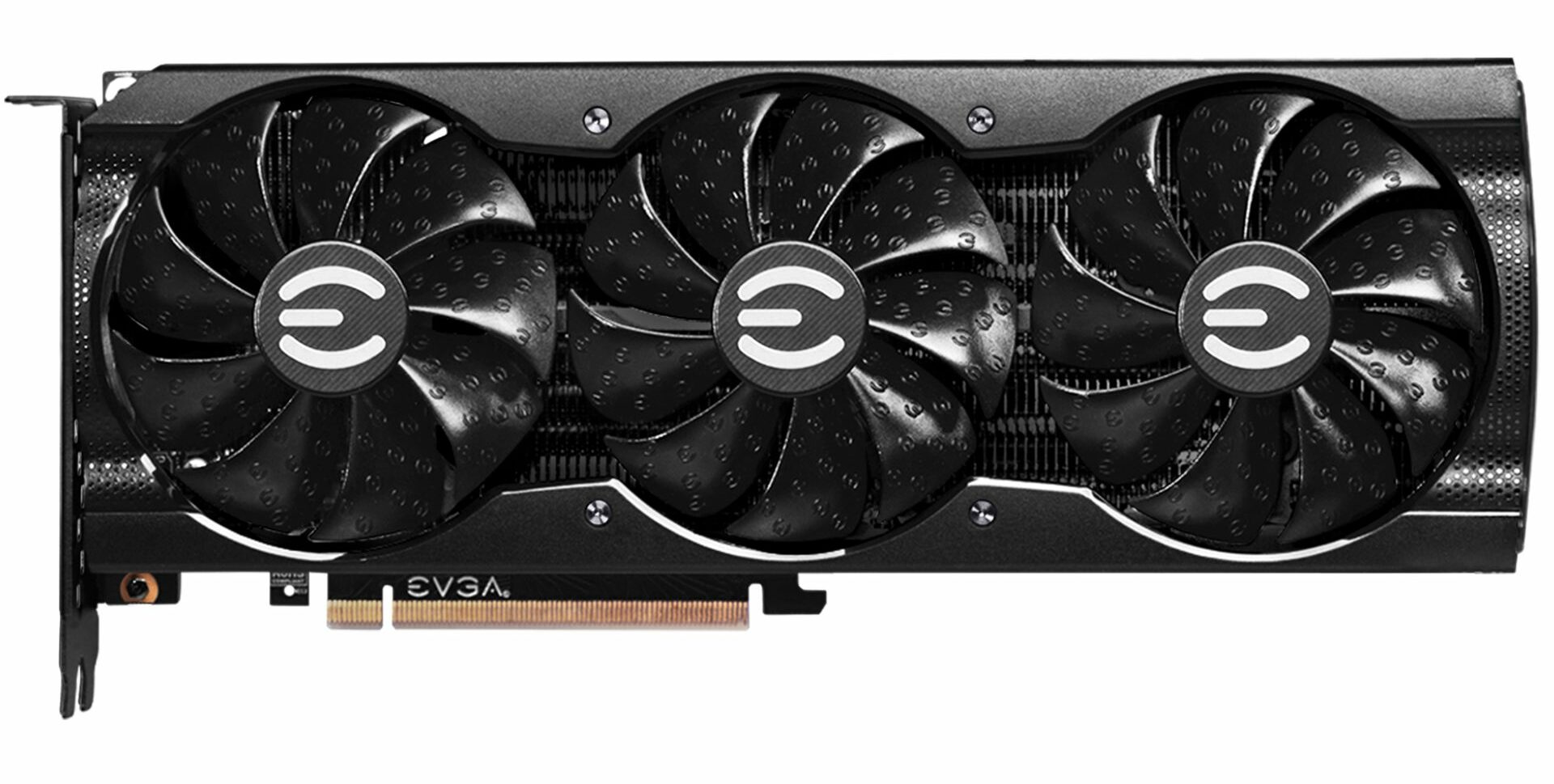
REASONS TO BUY
- Great factory OC
- Excellent performance for 1080p 240hz gaming
- Keeps up with 3090 at a significantly lower price point
- 12GB of fast GDDR6X VRAM
- Quality construction
- Great customization software (Precision X1)
- Runs cool and quiet
- Slim design
REASONS TO AVOID
- Power-hungry
- RGB only on the logo
Our Rating: 9.8/10
Upon its release, the EVGA 3080 Ti XC3 Ultra was touted as the best graphics card out of the ‘Ti’ lineup. That title has since been passed on to the 3090 Ti we just reviewed, which it well deserves, but that doesn’t mean the 3080 Ti is down and out.
Now, this GPU has many things in common with its 3080 brethren, like architecture and silicon size. But it features 10,240 Cuda cores which is a significant increase over the 3080 with only 8,796 cores.
Additionally, this version has 12GB of GDDR6X VRAM, which is a 2GB update over the 3080 chip and makes the card a bit more future-proof. And on top of that, you get a faster boost clock speed of 1725MHz, which is slightly faster compared to the 3080 (1710MHz) and even the 3090 (1695MHz).
While all that’s not an immense increase over the others, it still results in better frame rates. By looking at the charts above, you can see the 3080 Ti XC3 Ultra has much higher average frame rates than the competition in three out of four of our test results.
Performance-wise, the 3080 Ti is basically a 3090 with half the VRAM and a slightly faster clock speed. This means that the 3080 Ti XC3 Ultra will easily be able to handle the majority of games at 1080p 240hz on high graphical settings.
As we mentioned in our little disclaimer, the frame rates of these cards were recorded using the in-game ultra preset settings. Lowering the in-game settings to the high preset in Valhalla, for example, results in a 54% increase in frame rates.
So instead of 98 FPS at 1080p, you’ll be getting roughly 151 FPS. And for PlayerUnknown’s Battlegrounds, it results in a 37.6% increase, pushing that 194 to 267 frames per second.
So, make sure to play around with your in-game settings to achieve your desired 240 FPS–This will obviously be more difficult with newer games, but popular competitive games such as Overwatch, Counter-Strike, PUBG, Apex Legends, Fortnite will pose no challenge for this card.
Now, let’s talk about the build quality. This particular 3080 Ti isn’t as bulky as the 3090 Ti; it’s only 4.38” (111mm) long, 11.23” (285mm) wide and just 2.2 slots thick. This makes it easier to fit in mid-sized towers and reduces the weight strain on your motherboard.
XC3 Ultra is EVGA’s way of saying this card comes with a metal backplate, a slim cooler, and a factory overclock. The cooler on the XC3 model is over 30mm slimmer compared to the coolers on the FTW3 models.
Further, this version has three fans and a dense fin heat sink allowing for adequate cooling. As is always the case with EVGA, the cooling works flawlessly, and you can expect low temperatures and noise levels, even under heavier loads. And on top of that, you can even customize the cooling using the Precision X1 software.
The average power draw you can expect from the 3080 Ti XC3 Ultra is around 350W. EVGA recommends a 750W PSU, and we agree. This card may not be as power-demanding as the 3090 Ti, but it still requires a 12-pin to two 8-pin PCIe connector, which is included.
Lastly, EVGA offers a three-year limited warranty with this GPU. The warranty is transferable, and you even have the option of an additional two or seven-year extension, which requires proof of purchase and must be done within 30 days of the original purchase.
All in all, this 3080 Ti from EVGA is a fantastic card for 1080p 240hz gaming. Some may be surprised we chose it over the RTX 3090, but the performance increase isn’t really worth the extra $200-400, especially when pairing the card with a 1080p monitor.
On top of the performance, EVGA added an excellent cooling system and left out RGB lighting to keep the price down, making this card a real contender.
- READ ALSO: Best Graphics Cards for 1440p 144Hz Gaming
3. PowerColor Red Devil AMD Radeon RX 6800 XT
Stream Processors: 4608 | Base Clock: 1900 MHz | Boost Clock: 2340 MHz | Memory: 16 GB GDDR6 | Memory Clock Speed: 16000 MHz | Memory Interface: 256-bit | Max. Monitors Supported: 4 | Dimensions: 320 x 135 x 62 mm

REASONS TO BUY
- Fantastic price for such a powerful card
- Fantastic 1080p performance (240FPS on many titles)
- Good overclock out of the box
- High-quality construction, all-aluminum design
- Efficient cooling
- Runs cool and quiet
- Backlit I/O ports
- Power-efficient compared to Nvidia competitors
REASONS TO AVOID
- No RGB, only red LEDs
- Fewer games optimized for AMD cards
- Heavy and large (Measure your case to ensure compatibility)
Our Rating: 9.7/10
If you’re looking for the best possible 1080p performance for the lowest price, then look no further. The PowerColor RX 6800 XT has nearly all the bells and whistles (or their equivalent) of the 3080 Ti but can be found for hundreds of dollars less.
This card comes with a base clock of 1900MHz, but PowerColor was able to push it all the way to stable 2340MHz. This is marginally better than its 6800 (Non-XT) sibling, which only has a base clock of 1980MHz and a boost clock of 2190MHz. This, among other improvements, results in around an average 10% increase in performance with the 6800 XT over the 6800.
Additionally, the RX 6800 XT comes with 16GB of GDDR6 VRAM. GDDR6 is the current standard in high-end gaming. But it is marginally slower than GDDR6X that the 3080 Ti possesses. This is one of the reasons why the 6800 XT falls a little short of its 3080 Ti competitor, despite having more VRAM since gaming utilizes the speed of your VRAM, not necessarily the amount when it comes to cards with more than 10GB of memory.
If you check out the 3DMark scores above, you can see the PowerColor RX 6800 XT is neck and neck with the 3080 Ti as far as raw power is concerned. But it’s a little easier to see the differences in real-world performance by actually playing a game.
During testing at 1080p, we found that the RX 6800 XT produced anywhere from 19 – 86 less FPS compared to the 3080 Ti, except in Assassin’s Creed Valhalla, where it even matched the performance of the 3090 Ti. There will be some games where the RX 6800 XT performs better than its Nvidia counterparts, but it’s only going to be a few games.
On average, you can expect around 15% better performance from the 3080 Ti, which is a good trade-off if you look at the price tag.
To get the most out of this card, we suggest lowering the graphics in multiplayer first-person shooters to high or medium. For example: While playing PUBG, the RX 6800 XT would hover around 148 FPS with ultra settings. Lowering the settings to high gave us 267 FPS, and medium resulted in the frame rate skyrocketing to 340 FPS.
But for cinematic games where beauty is a top priority, the 6800 XT performs just splendidly with ultra presets.
In terms of construction, the design is sturdy and solid. It uses an all-aluminum back plate that has holes in strategic locations allowing better airflow through the heat sinks. Additionally, the fan shroud is also made of aluminum. This results in a somewhat heavy GPU, but surprisingly, sag was not an issue.
The cooling is excellent as well, consisting of three large fans and a dual heat sink. It has five nickel-plated copper heat pipes that snake into each bank of fins, helping distribute excess thermals, which works very well.
It is somewhat large, however. Being 12.6” (320mm) long, 5.3” (135mm) wide, and 2.4” (62mm) thick, it’s not the largest we’ve seen, but you still might want to take some measurements of your rig before you buy this card.
Powering this card will require at least a 650w power supply and two 8-pin or 6+2-pin PCIe connectors. At a TDP of 300W, it shouldn’t be too difficult to just slap it in a PC, as many of us have a PSU that can handle it. But if you’re still rocking a 500W PSU, it might be time to upgrade.
The I/O panel comes equipped with an HDMI 2.0 port and three DisplayPort 1.4 ports. These are all backlit to make plugging in cables easier in dimly lit areas.
Finally, PowerColor offers a two-year warranty, but only in the continental US and Canada to verified residents. Furthermore, PowerColor only offers this warranty to the original purchaser, so if you get one secondhand, you’re SOL.
In our opinion, that policy is terrible. Being only valid in continental North America really sucks for people in Hawaii, Alaska, or any of the US territories, as well as for our friends from across the pond.
As we said in the opening paragraph of this review, the RX 6800 XT represents by far the best price-to-performance ratio, especially this card from PowerColor–It’s pure function over form. By just sacrificing a small amount of performance, you are saving upwards of $300 when you choose the PowerColor RX 6800 XT over the 3080 Ti.
The only issue is that there are fewer games optimized for AMD cards, and you’re also not that future-proofed compared to the 3080 Ti and 3090 Ti. However, if we’re purely talking about a card for smooth 1080p 240hz gaming with the best price tag, it’s tough to beat the RX 6800 XT from PowerColor.
- YOU MAY ALSO LIKE: Best Gaming Graphics Cards Under $500
4. ASUS TUF Gaming NVIDIA GeForce RTX 3070 Ti OC
CUDA Cores: 6144 | Base Clock: 1575 MHz | Boost Clock: 1815 MHz | Memory: 8 GB GDDR6X | Memory Clock Speed: 19000 MHz | Memory Interface: 256-bit | Max. Monitors Supported: 4 | Dimensions: 300 x 127 x 52 mm

REASONS TO BUY
- Excellent 1080p 240hz performance for older and less demanding titles
- Affordable
- Relatively easy to power
- Sleek minimal aesthetics
- Quality construction
- Excellent connectivity
- Runs cool and quiet
REASONS TO AVOID
- Not future-proof at all
- Ray Tracing performance is sub-optimal
- Large and heavy
- Outperformed by AMD at the same price point
- No RGB
Our Rating: 9.5/10
With the Asus TUF RTX 3070 Ti, we start to get into the more affordable territory. Though, it’s worth noting that it gets outperformed by the RX 6800 XT most of the time and will cost you around the same price. However, if you’re one of the gamers who refuse to buy AMD cards, the 3070 Ti is an interesting and affordable option for 1080p 240hz gaming.
While the benchmarks above show that the 3070 Ti from ASUS scored well below the 6800 XT, this GPU is still a beast. Gaming in 1440p will be a breeze, and 1080p at 240Hz even more so. This 3070 Ti was able to produce terrific frame rates on ultra settings during testing, but simply knocking the settings down only one notch will greatly increase this metric.
With specs like 6,144 Cuda cores, a boosted clock speed of 1815 MHz, and 8GB of GDDR6X memory, it is still a top contender in today’s gaming card market. But it’s also easy to see the shortcomings as well. 8GB of VRAM is plenty of memory for games these days, but with the rate at which technology is increasing, that may not be enough in the years to come. So, we would start to worry about how future-proof cards with 8GB are. But at least it’s GDDR6X which is the standard for high-end gaming.
To power, this GPU will require two 8-pin/6+2-pin PCIe connectors and a recommended PSU wattage of 750w. With the 290w TDP, it should be easy to incorporate into most builds, but if you’re lacking the recommended power supply, we highly suggest you upgrade that first. Otherwise, you risk bricking your GPU or causing all kinds of other problems.
While not as beefy as some, it’s not small. The 3070 Ti from ASUS measures 11.81” (300mm) long, 5” (127mm) wide, and 2” (51.7mm) thick. Make sure your case is big enough, but we would wager most modern cases can accommodate this GPU.
The cooling system consists of three alternating-direction fans. Meaning the outer two spin clockwise while the middle spins counterclockwise. This helps reduce air turbulence resulting in more efficient airflow.
Speaking of airflow, on the metal back plate, there is a large hole cut out to eliminate air resistance through the last heat sink, of which there are two. One is mostly for reducing the graphics chip temperature, while the other is dedicated to memory. This allows for more precise cooling and improved performance and works well when put to the test.
On the rear of the GPU, we find a total of five ports. There are two HDMI 2.1 ports and three DisplayPort 1.4 outputs. This gives you plenty of options for connecting multiple monitors and displays.
ASUS backs this GPU with a three-year warranty. The warranty is non-transferable and begins on the date of purchase. If you need to cash in on this warranty, make sure you have the proof of purchase. Otherwise, ASUS will consider the manufacturing date as the beginning of the warranty period.
This isn’t the end all and is all of GPUs, and it was never meant to be. It was designed as a decent middle ground between premium and basic performance, and it does that job well.
Don’t expect to buy this card and have phenomenal results because it wasn’t meant to be used with ultra settings in high-definition. But for less graphically intensive games like Fortnite, Overwatch, or Counter-Strike, for example, it’s the perfect companion for your 1080p 240hz monitor.
- RELATED READING: Best Gaming Graphics Cards Under $400
5. XFX Speedster SWFT 309 AMD Radeon RX 6700 XT CORE
Stream Processors: 2560 | Base Clock: 2581 MHz | Boost Clock: 2581 MHz | Memory: 12 GB GDDR6 | Memory Clock Speed: 16000 MHz | Memory Interface: 192-bit | Max. Monitors Supported: 4 | Dimensions: 304 x 123 x 42 mm
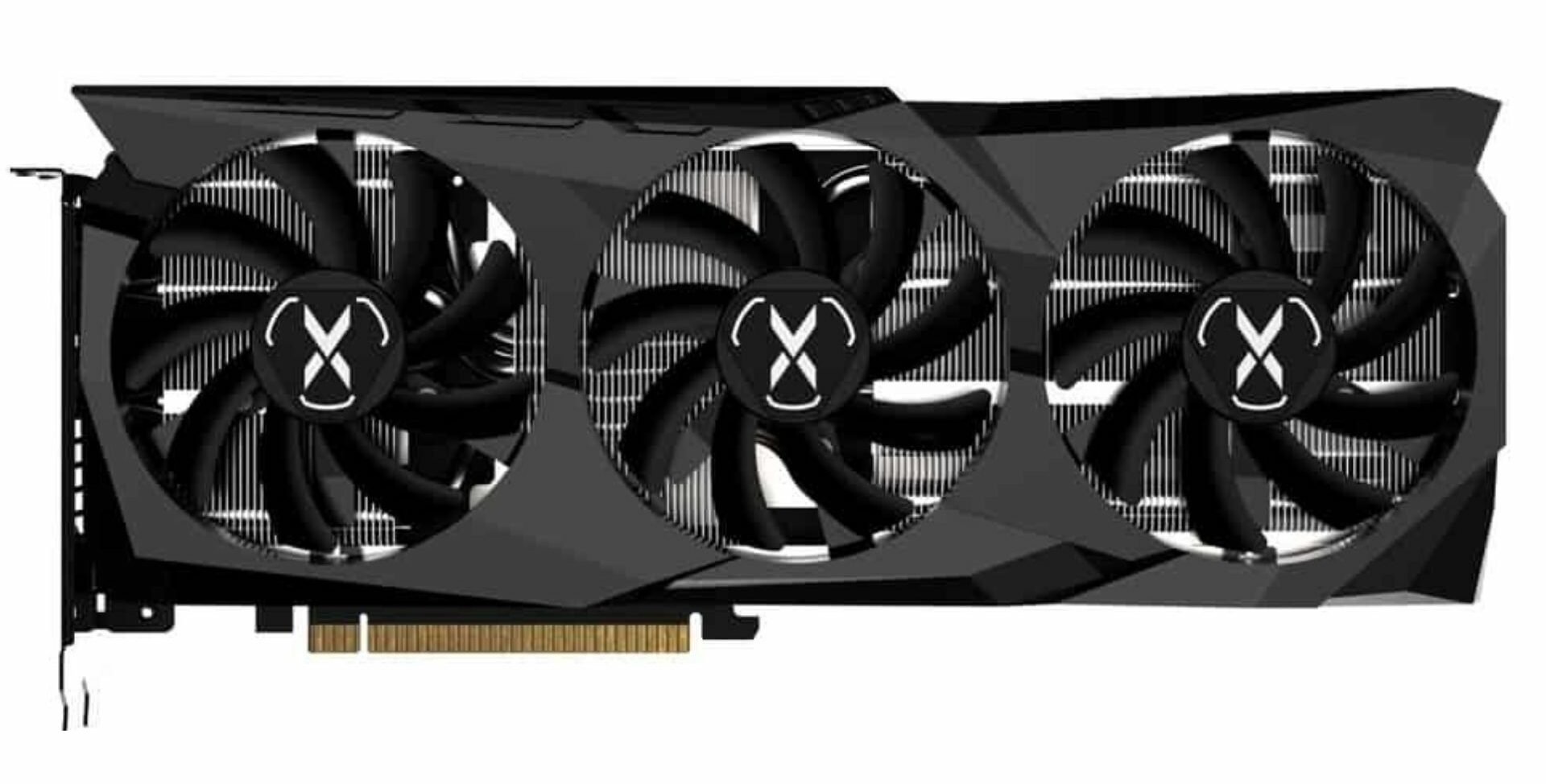
REASONS TO BUY
- Great value for the money
- Excellent 1080p performance
- Handles 1440p well if you decide to upgrade
- Respectable amount of VRAM for a ‘budget’ card
- Quality construction
- Slim design
- Self-service does not void your warranty
REASONS TO AVOID
- Can run a little hotter due to the skinny cooler
- You will have to dial the settings back often to achieve 240 FPS
- No RGB
Our Rating: 9.4/10
For the majority of gamers, buying a graphics card is usually a really big financial decision. And due to this fact, many want to get the best they can afford. And for a 1080p 240hz monitor, the XFX Speedster SWFT 309 6700 XT CORE is the best choice for those of you who work with a tight budget and don’t mind dialing the in-game settings back often.
Comparing this card with any of the previous ones would be unfair. This card does exceptionally well for the price (which is about $200 less than the ASUS 3070 Ti, by the way). The XFX 6700 XT is marketed as an entry-level 1440p GPU, but it absolutely shines at 1080p in comparison.
Our benchmarking results show that this card is capable of 77 frames per second on average in Assassin’s Creed Valhalla and 116 fps in PUBG while using the ultra presets. Lowering the graphics settings to medium results in an increase to 155 frames per second in Valhalla and an impressive 223FPS in PUBG, which shows you the potential of this card if you’re willing to lower your settings.
Dimensionally, this GPU is rather sleek. Especially when you compare it to the 3090 Ti, that thing is MASSIVE. And side by side, the XFX 6700 XT might as well be a toy model.
It does have three 90mm fans and a decently sized cooler, making the length 11.97” (304mm), so it is a little long. However, it’s only 1.6” (42mm) thick and takes up 2.2 slots.
The backplate is made of aluminum and also acts as a heat sink. On the right side is a large hole through the PCB and backplate, which allows air to flow freely through the heat sink fins, improving overall thermal performance.
Helping improve affordability, this GPU doesn’t have any extra frills like an aluminum fan shroud or RGB. While RGB helps improve aesthetics, this GPU still looks really nice. It has a clean black mated look.
On the rear of the GPU, there is one HDMI 2.1 port and three DisplayPort 1.4 outputs for support of up to four monitors, which is pretty standard compared to other graphics cards.
And finally, XFX offers a three-year limited warranty on their SWFT graphics cards. Make sure you register your GPU, though, because registration must be done within the first 30 days of purchase. Additionally, you are able to service your GPU yourself, like reapplying thermal pads or taking it apart to clean the heat sink, punctured warranty tape, and all. However, any accidental damage is not covered.
At the end of the day, most of us want the best but typically settle for what is available and affordable. While this card is affordable and can produce 240 FPS on 1080p monitors, you’ll be forced to tweak settings much more often to maintain stable FPS. And so, we recommend checking benchmarks of the games you plan on playing before pulling the trigger on this card.
- READ ALSO: Biggest PC Cases
6. MSI Gaming Nvidia RTX 3060 Ti Ventus 2X
CUDA Cores: 4864 | Base Clock: 1410 MHz | Boost Clock: 1695 MHz | Memory: 8 GB GDDR6 | Memory Clock Speed: 14000 MHz | Memory Interface: 256-bit | Max. Monitors Supported: 4 | Dimensions: 235 x 124 x 42 mm

REASONS TO BUY
- Compact, 2-fan design
- Excellent 1080p and 1440p performance
- One of the cheapest cards to pair with a 1080p 240hz monitor
- Attractive aesthetics
- Quality build
- Solid thermals
- Stays quiet even under heavier loads
REASONS TO AVOID
- No RGB
- Gets outperformed by AMD at the same price point
- Minimum recommended VRAM for high-end gaming
- You will be forced to dial the settings back a lot in some cases in order to achieve 240 FPS
Our Rating: 9.2/10
While this card is still head over heels better than any of the older GTX cards, it’s coming in as our minimum recommended GPU for 1080p 240hz gaming in 2023. It has all of the features you’d expect from an RTX card, like ray tracing and DLSS, but in terms of performance, you won’t be able to get as much FPS out of it compared to other cards.
By looking at the benchmarks, you can see this GPU goes practically toe to toe with the SWFT 6700 XT in many of our test results. But the 3DMark scores show it doesn’t have the same raw computing power.
A quick run-down of specs reveals that the 3060 Ti uses 4,864 Cuda cores, has a boosted clock rate of up to 1695MHz, and utilizes 8GB of GDDR6 VRAM. That’s not bad for 1080p gaming, but to put that in perspective, cards such as the 3090 Ti have over ten thousand Cuda cores and three times the VRAM, so you can see how that’s going to affect the gaming performance.
As for the frame rate, the 3060 Ti from MSI gives a solid performance in all of our tests. Due to the lack of computing power that’s found in the higher-end cards, we recommend this GPU ONLY if you’re playing older or less demanding games. Also, make sure to check the benchmarks of specific games you play to find out if this card is capable of producing your desired FPS.
When it comes to construction, the MSI 3060 Ti Ventus 2X does have an aluminum backplate that features a cutout on one side that allows air to flow freely through the board and heat sink.
Besides that, with only two fans and a thin cooler, the 3060 Ti is more compact than other cards. It’s only 9.25” (235mm) long, 4.8” (124mm) wide, and only 1.6” (42mm) thick. Due to the slender design, it is able to fit into some tighter cases, but that can be a double-edged sword.
In terms of cooling, this card can run a little warm under a full load, but nothing that should have you worried. It’s also surprisingly quiet despite only having two fans, unlike most of the cards we reviewed.
The I/O panel consists of an HDMI 2.1 port and three DisplayPort 1.4 ports. With these, this card can support four displays and is capable of the bandwidth required to play at 1080p with 240hz.
MSI backs their GPUs with a three-year limited warranty that does not cover accidental damage. It goes into effect on the date of purchase. If you can not supply MSI with a proof-of-purchase date, then MSI will consider the manufacturing date as the beginning of the warranty period, so make sure to hold on to the receipt.
Overall, this 3060 Ti from MSI is the bare minimum if you’re looking for a cheap card to pair with a 240hz monitor. It does have enough performance to produce over 200 FPS in older, less demanding games; however, it gets slightly outperformed by the RX 6700 XT at the same price point. And for that reason, we’d only recommend this card over the 6700 XT if you can find it on sale.
- RELATED READING: Best Horizontal PC Cases
7. MSI Gaming AMD Radeon RX 6600 XT MECH 2X
Stream Processors: 2048 | Base Clock: 1626 MHz | Boost Clock: 2602 MHz | Memory: 8 GB GDDR6 | Memory Clock Speed: 14000 MHz | Memory Interface: 128-bit | Max. Monitors Supported: 4 | Dimensions: 235 x 125 x 46 mm

REASONS TO BUY
- The cheapest card for 1080p 240hz gaming (only a few titles)
- Faster than the RTX 3060 on average
- Easy to power/good efficiency
- Compact and lightweight
- Quality build
- Good thermals
- Quiet operation
REASONS TO AVOID
- Most games will need to have their in-game setting reduced to achieve a high frame rate
- Low amount of slower VRAM
- No RGB
- Bare bones minimum for 1080p 240hz gaming
Our Rating: 9.0/10
If the MSI RTX 3060 Ti is the minimum we recommend, then this RX 6600 XT from MSI is the bare-bones minimum you need for high frame rates at 1080p. When we talked about the 3090 Ti and said you can play almost all games at 1080p with 240FPS, but there are some exceptions, then the RX 6600 XT is the exact opposite–You can’t play almost any game at 240FPS, but there are some exceptions.
In our Assassin’s Creed Valhalla test, we found the RX 6600 XT achieved an average of 56 frames per second in 1080p. This isn’t too bad but lowering the settings to medium accomplished a much better rate of 135fps.
Additionally, we averaged 173FPS in Overwatch, which isn’t too shabby. But simply dropping the setting from ultra to medium gave us a fantastic 316 frames per second. And let’s be honest, when you’re playing a game like Overwatch, the graphics really don’t matter.
So you can see this card is capable of producing 240FPS; you’ll just have to play the right game at the right settings.
In terms of specs, this RX 6600 XT from MSI has a boosted clock speed of 2602MHz and features 8GB of GDDR6 VRAM but only 2048 stream processors. For comparison, this card’s bigger brother, the 6700 XT, has 2560 stream processors and thus provides much higher performance.
The overall dimensions are 235mm x 125mm x 46mm, which makes this card easy to fit inside almost any case. And as for the build quality and design, it’s lightweight, compact, and overall well-made. It has two large fans on top of a not-so-thick cooler and has that typical MSI look. But sadly, there is no RGB.
It’s also easy to power. The RX 6600 XT MECH 2X has a TDP of just 160 watts and requires a single 8-pin/6+2-pin PCIe power connector. MSI recommends a minimum of 500W PSU to handle any spikes this card may produce.
Taking a look at the rear, there are three DisplayPort 1.4 ports and one HDMI 2.1 port. Even for such an inexpensive card, you will still be able to run up to a four-monitor set-up.
MSI backs this graphics card with a three-year limited warranty and the warranty period goes into effect on the date of purchase. If you can not supply MSI with a proof-of-purchase date, they will consider the manufacturing date as the beginning of the warranty period, so make sure to hold on to the receipt.
With everything considered, this card isn’t all that bad for the price. If you only play games where the quality of graphics doesn’t really play a big role, such as League of Legends, Counter-Strike, or Overwatch, to name a few, then this is actually a great option for you. This card is easy on the wallet and easy to power, but don’t expect a ground-breaking performance of it.
Final Words
So there it is, folks, the seven best graphics cards for 1080p 240Hz gaming in 2023.
We have talked about the best gaming GPU in the known galaxy, all the way down to the lowest entry-level 1080p 240hz graphics card.
By now, you should have a good grasp on what each of these GPUs is capable of and how they could fit into your build.
Did we help you find which of these cards is best for your circumstances? What about the selection? Do you agree or disagree with our line-up? We always love to hear from our audience, so please comment below and tell us what you think.
– See you in the next one!








Be the first to comment